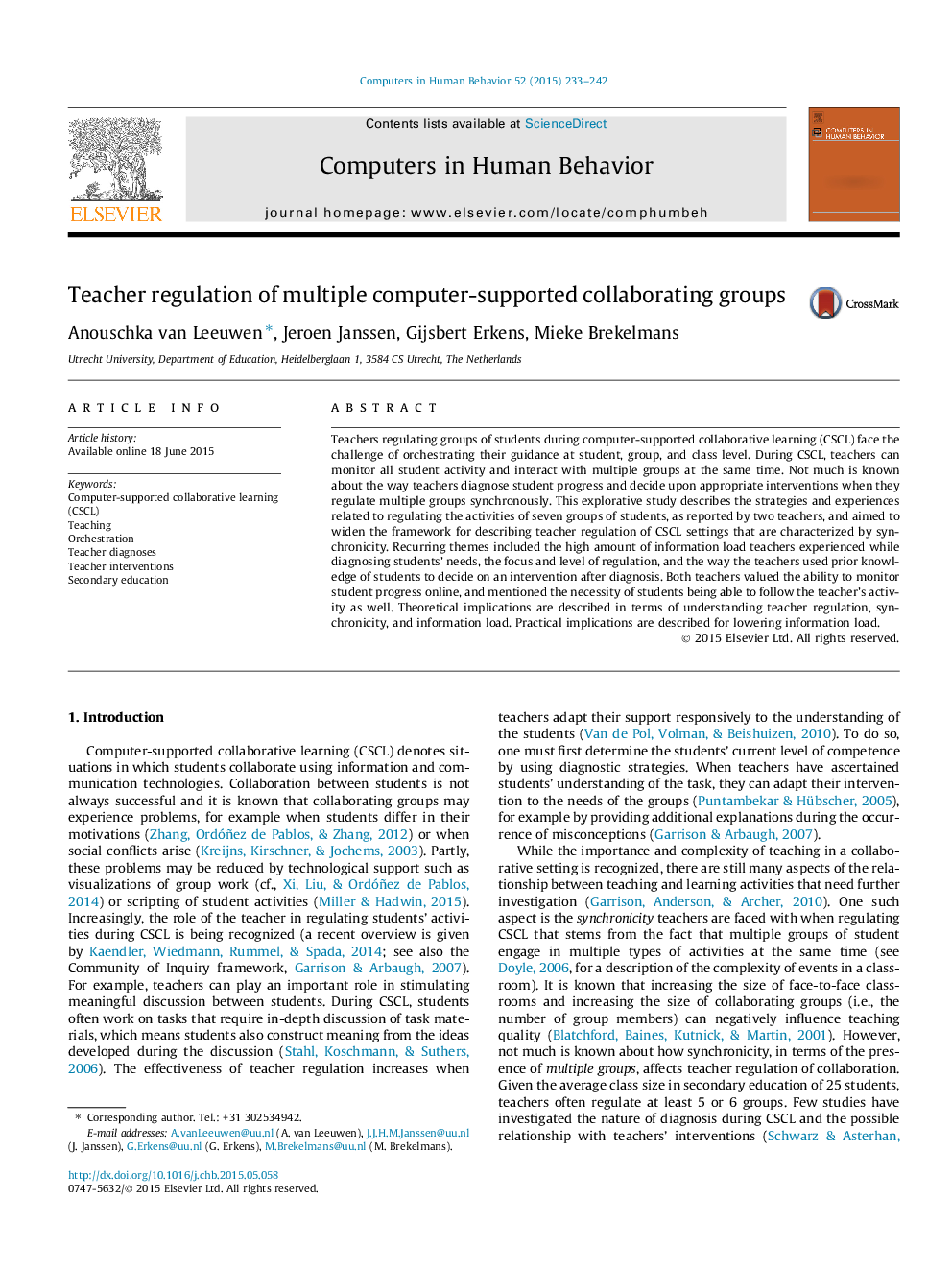| Article ID | Journal | Published Year | Pages | File Type |
|---|---|---|---|---|
| 6837995 | Computers in Human Behavior | 2015 | 10 Pages |
Abstract
Teachers regulating groups of students during computer-supported collaborative learning (CSCL) face the challenge of orchestrating their guidance at student, group, and class level. During CSCL, teachers can monitor all student activity and interact with multiple groups at the same time. Not much is known about the way teachers diagnose student progress and decide upon appropriate interventions when they regulate multiple groups synchronously. This explorative study describes the strategies and experiences related to regulating the activities of seven groups of students, as reported by two teachers, and aimed to widen the framework for describing teacher regulation of CSCL settings that are characterized by synchronicity. Recurring themes included the high amount of information load teachers experienced while diagnosing students' needs, the focus and level of regulation, and the way the teachers used prior knowledge of students to decide on an intervention after diagnosis. Both teachers valued the ability to monitor student progress online, and mentioned the necessity of students being able to follow the teacher's activity as well. Theoretical implications are described in terms of understanding teacher regulation, synchronicity, and information load. Practical implications are described for lowering information load.
Related Topics
Physical Sciences and Engineering
Computer Science
Computer Science Applications
Authors
Anouschka van Leeuwen, Jeroen Janssen, Gijsbert Erkens, Mieke Brekelmans,
